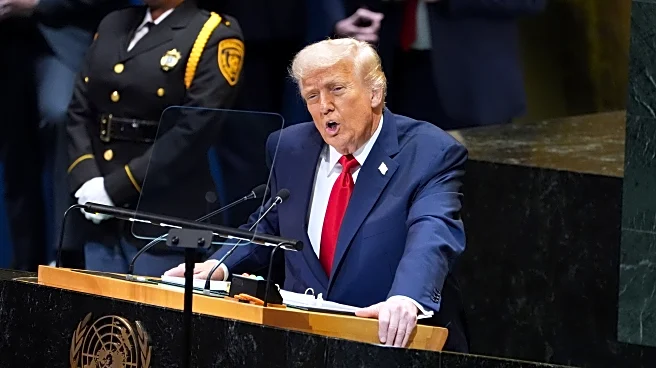What's Happening?
A new index launched by Orbital, in collaboration with Artemis.xyz and Sensor Tower, highlights the growing role of stablecoins in retail payments. The 'Stablecoins Retail Payments Index' reveals that Binance Smart Chain (BSC) has emerged as the leading blockchain for retail-sized transaction volumes, accounting for 45% of such payments. The index focuses on consumer payments valued up to $10,000, filtering out large-scale B2B and institutional transfers. The data indicates a shift towards lower-cost networks like BSC and TRON, which are driving significant stablecoin adoption. USDT remains the dominant token in retail payments, although USDC is experiencing faster growth in this segment. The index also identifies USD1 as a potential challenger, with a 757% increase in retail transaction volume between May and June.
Why It's Important?
The findings from the index underscore the increasing importance of stablecoins in facilitating cross-border transactions, where speed and cost are critical. This trend could have significant implications for the global financial system, particularly in regions with currency controls or high inflation. The use of stablecoins in retail payments suggests a potential shift in consumer behavior, with more individuals opting for digital currencies over traditional fiat money. This could lead to broader adoption of blockchain technology in everyday financial transactions, impacting banks, payment processors, and financial regulators. The growth of stablecoins also raises questions about their role in the future of money, potentially complementing or replacing traditional payment methods.
What's Next?
The index suggests that stablecoins could become a more integral part of everyday financial transactions, although this transition may take time. As stablecoins continue to gain traction, financial institutions and regulators may need to adapt to this evolving landscape. The growth of USD1 and the increasing use of stablecoins in regions with currency controls could prompt further scrutiny from governments and financial authorities. Additionally, the competitive dynamics between USDT and USDC in retail payments may lead to innovations and shifts in user preferences, influencing the development of new financial products and services.
Beyond the Headlines
The index highlights the concept of 'shadow FX' rates, where the cost of acquiring stablecoins varies significantly across different markets. This phenomenon reflects underlying economic conditions and currency controls, offering insights into the real-world value of stablecoins in various regions. The premium paid for stablecoins in countries like Venezuela, Turkey, and South Africa underscores their role as a hedge against inflation and currency devaluation. As stablecoins become more prevalent, ethical and regulatory considerations will emerge, particularly regarding their impact on financial inclusion and economic stability.












